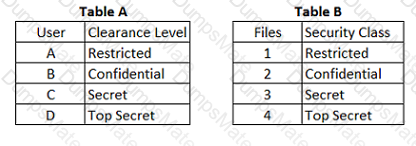The configuration management and control task of the certification and accreditation process is incorporated in the system acquisition and development phase of the System Development Life Cycle (SDLC). The SDLC is a process that involves planning, designing, developing, testing, deploying, operating, and maintaining a system, using various models and methodologies, such as waterfall, spiral, agile, or DevSecOps. The SDLC can be divided into several phases, each with its own objectives and activities, such as:
System initiation: This phase involves defining the scope, purpose, and objectives of the system, identifying the stakeholders and their needs and expectations, and establishing the project plan and budget.
System acquisition and development: This phase involves designing the architecture and components of the system, selecting and procuring the hardware and software resources, developing and coding the system functionality and features, and integrating and testing the system modules and interfaces.
System implementation: This phase involves deploying and installing the system to the production environment, migrating and converting the data and applications from the legacy system, training and educating the users and staff on the system operation and maintenance, and evaluating and validating the system performance and effectiveness.
System operations and maintenance: This phase involves operating and monitoring the system functionality and availability, maintaining and updating the system hardware and software, resolving and troubleshooting any issues or problems, and enhancing and optimizing the system features and capabilities.
The certification and accreditation process is a process that involves assessing and verifying the security and compliance of a system, and authorizing and approving the system operation and maintenance, using various standards and frameworks, such as NIST SP 800-37 or ISO/IEC 27001. The certification and accreditation process can be divided into several tasks, each with its own objectives and activities, such as:
Security categorization: This task involves determining the security level and impact of the system and its data, based on the confidentiality, integrity, and availability criteria, and applying the appropriate security controls and measures.
Security planning: This task involves defining the security objectives and requirements of the system, identifying the roles and responsibilities of the security stakeholders, and developing and documenting the security plan and policy.
Security implementation: This task involves implementing and enforcing the security controls and measures for the system, according to the security plan and policy, and ensuring the security functionality and compatibility of the system.
Security assessment: This task involves evaluating and testing the security effectiveness and compliance of the system, using various techniques and tools, such as audits, reviews, scans, or penetration tests, and identifying and reporting any security weaknesses or gaps.
Security authorization: This task involves reviewing and approving the security assessment results and recommendations, and granting or denying the authorization for the system operation and maintenance, based on the risk and impact analysis and the security objectives and requirements.
Security monitoring: This task involves monitoring and updating the security status and activities of the system, using various methods and tools, such as logs, alerts, or reports, and addressing and resolving any security issues or changes.
The configuration management and control task of the certification and accreditation process is incorporated in the system acquisition and development phase of the SDLC, because it can ensure that the system design and development are consistent and compliant with the security objectives and requirements, and that the system changes are controlled and documented. Configuration management and control is a process that involves establishing and maintaining the baseline and the inventory of the system components and resources, such as hardware, software, data, or documentation, and tracking and recording any modifications or updates to the system components and resources, using various techniques and tools, such as version control, change control, or configuration audits. Configuration management and control can provide several benefits, such as:
Improving the quality and security of the system design and development by identifying and addressing any errors or inconsistencies
Enhancing the performance and efficiency of the system design and development by optimizing the use and allocation of the system components and resources
Increasing the compliance and alignment of the system design and development with the security objectives and requirements by applying and enforcing the security controls and measures
Facilitating the monitoring and improvement of the system design and development by providing the evidence and information for the security assessment and authorization
The other options are not the phases of the SDLC that incorporate the configuration management and control task of the certification and accreditation process, but rather phases that involve other tasks of the certification and accreditation process. System operations and maintenance is a phase of the SDLC that incorporates the security monitoring task of the certification and accreditation process, because it can ensure that the system operation and maintenance are consistent and compliant with the security objectives and requirements, and that the system security is updated and improved. System initiation is a phase of the SDLC that incorporates the security categorization and security planning tasks of the certification and accreditation process, because it can ensure that the system scope and objectives are defined and aligned with the security objectives and requirements, and that the security plan and policy are developed and documented. System implementation is a phase of the SDLC that incorporates the security assessment and security authorization tasks of the certification and accreditation process, because it can ensure that the system deployment and installation are evaluated and verified for the security effectiveness and compliance, and that the system operation and maintenance are authorized and approved based on the risk and impact analysis and the security objectives and requirements.









